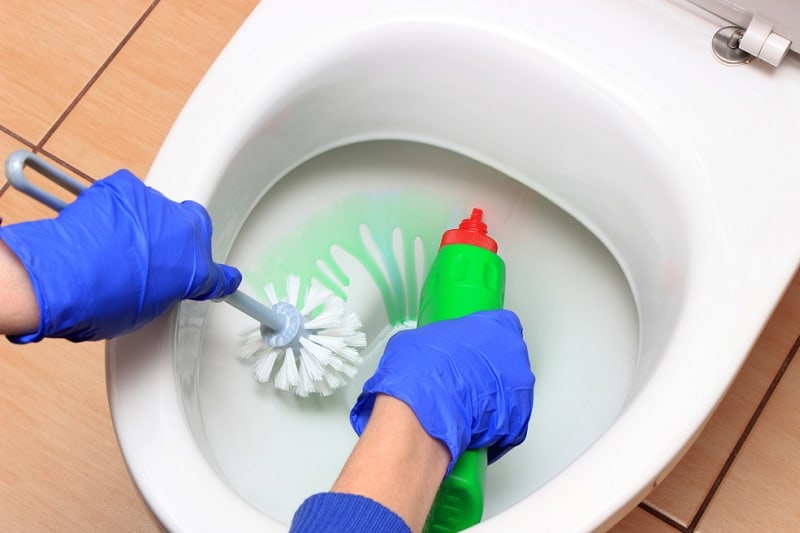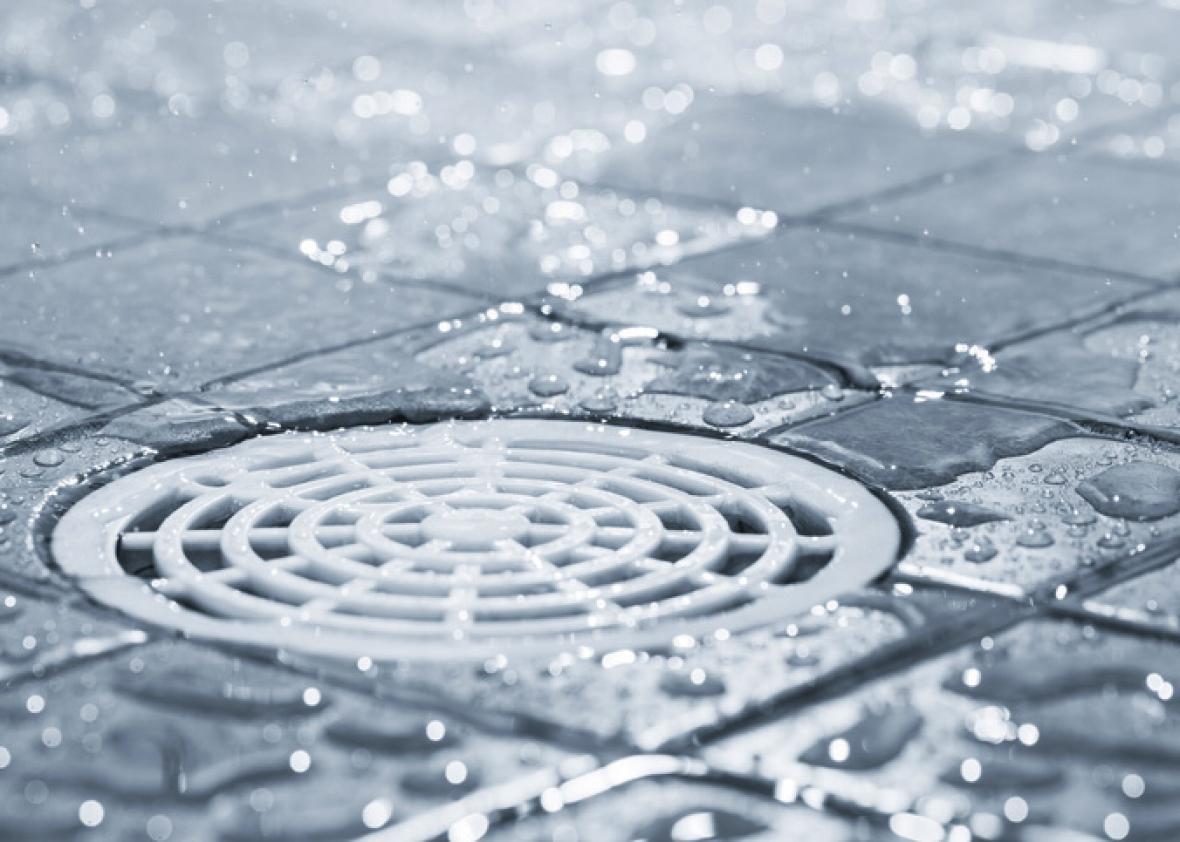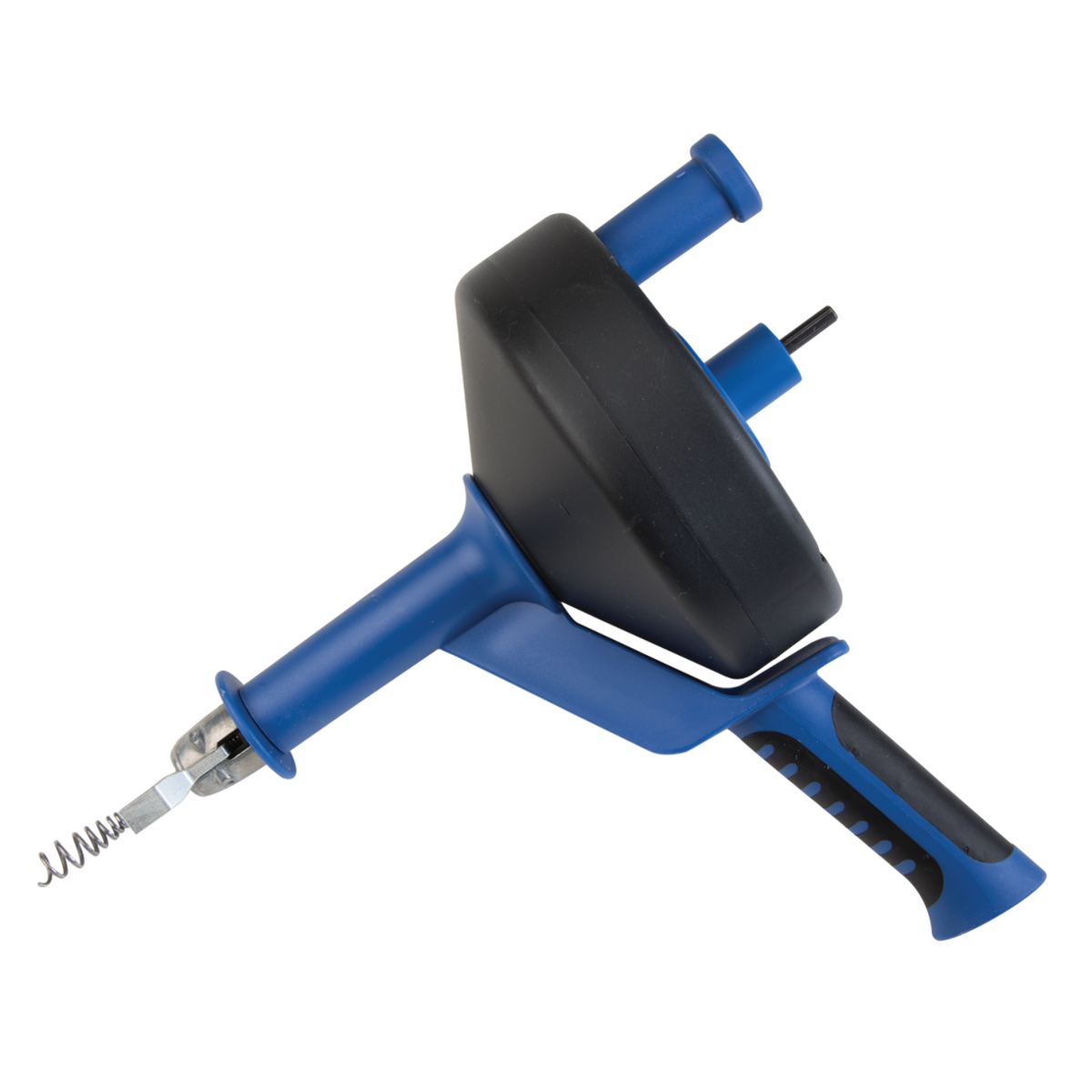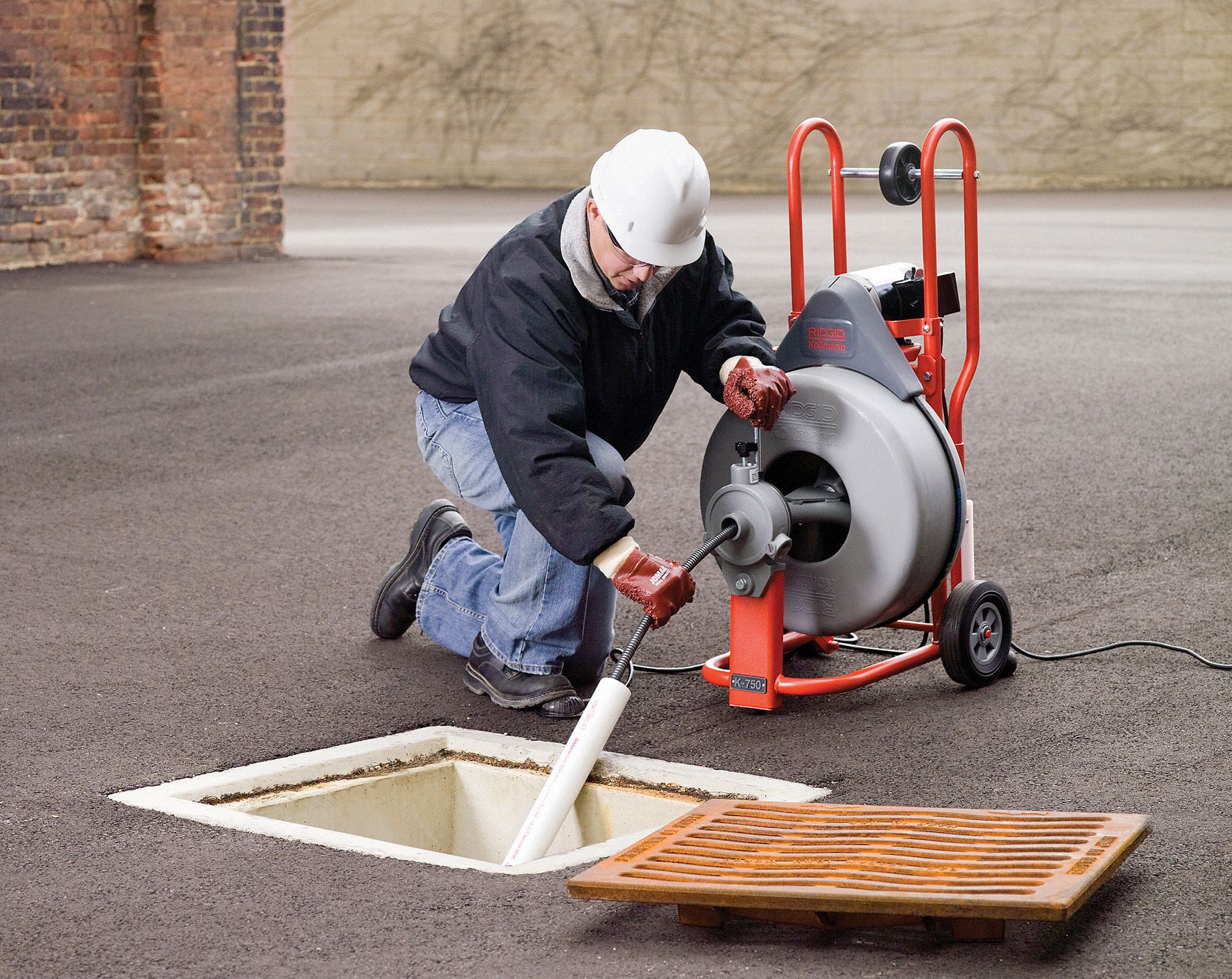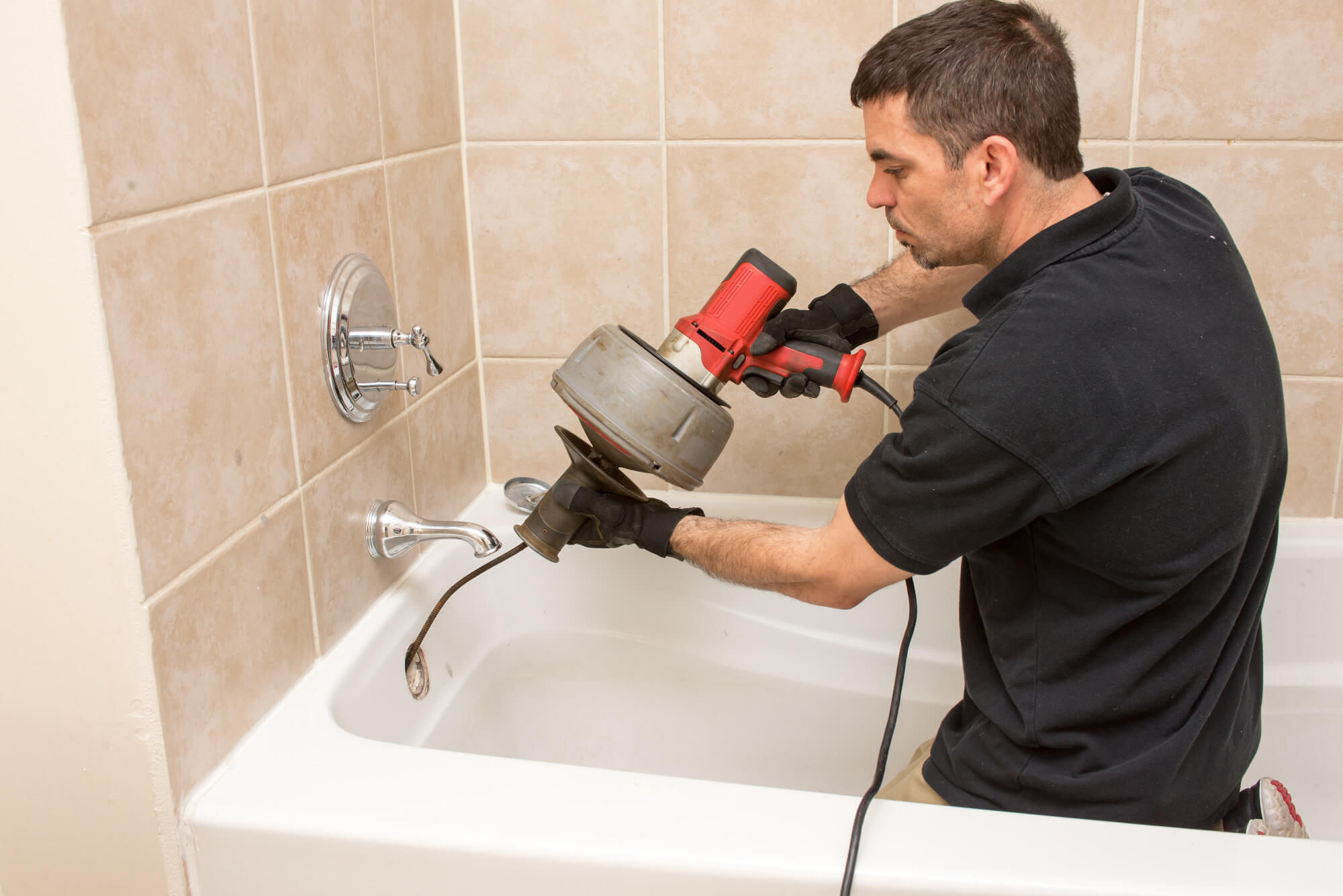It could be a usual busy day in your kitchen and you’re washing dishes while the pot boils on the stove. You tend to the boiling pot and return to your kitchen sink only to find the dishes submerged in the dirty water.
You move the dishes from the drain and check for food debris but find nothing. Then you decide to carry out some tried-and-tested DIY methods of clearing the kitchen drain but find no luck.
Oftentimes, the culprit behind stubborn and clogged kitchen drains is
- Either fats and oils collected in the twists and turns of the pipes
- Or heavy and decayed chunks of food blocking the drain at regular intervals
Now, what do you do if you’ve done everything you could but the kitchen sink still won’t drain?
If you are experiencing kitchen sink not draining, but other pipes are clear, there may be a blockage in your drain line. It could be caused by food waste buildup, hair or detergent residue stuck on the drainage screen at the bottom of your sink.
If not resolved quickly, the blockage can lead to backed-up sewage and flooding in your basement or first floor bathroom.
Here are some solutions to help clear up this issue:
Tackling Persistent Kitchen Drain Clogs
More often than not, when we believe there is no clog in the kitchen sink pipes, there most usually is something keeping your dirty water from draining.
You could have tried all the methods you know and even googled some up, but with no luck. In this article, we will cover every trick and technique available that you can try before finally reverting to the professionals for help.
Let’s begin.
1. Boiling water to the rescue
It may not be the most helpful method out there, but pouring boiling water regularly down your kitchen drain is a good habit to avoid future blockages.
All you have to do is boil a gallon of water and pour it directly into the drain opening in the sink. Boiling water usually clears away the sticky and greasy residue of food.
If it doesn’t work the first time around, try pouring boiling water another time. Give it a few minutes to rest and then open the tap to check for smooth draining. If your kitchen sink still drains with resistance, it’s time to try a different tactic.
Keep in mind not to use this method if your kitchen drain is connected to PVC pipes or it could cause more damage than repair.

2. Vacuum out the pipe
Vacuuming out your kitchen drain is an easy way to remove any food debris and grease buildups from your pipes. This works best if you don’t have a lot of debris stuck inside the pipes.
To vacuum out your kitchen drain, turn off the flow of water in your kitchen sink and attach the hose nozzle to the drain outlet.
Turn on the vacuum cleaner and run it through your kitchen sink until the water level is low enough to allow you access to clean the entire length of the pipes.

Implementing a natural home remedy
Commercial drain cleaners are super effective in many ways. While they offer instant results, the damage they cause is gradually powerful. When we require a quick fix to our kitchen draining problem, we naturally revert to pouring some intense commercial drain cleaners down the hatch.
Instead, there exists a natural home remedy, powerful and effective, without having to invest further in repairing the kitchen pipes due to chemical damage.
3. Use baking soda
Baking soda is one of those household staples that everyone has used at least once. Baking soda is actually very effective at removing clogs from the kitchen sink pipes.
Baking soda is basically a natural deodorizer and cleaning agent. When used as a drain cleaner, it dissolves solid deposits and eliminates odors.
Mix 1 tablespoon of baking soda with 2 cups of warm water. Pour the solution into the kitchen sink and let sit for 30 minutes.
Afterward, grab a plunger and plunge the drain to loosen any remaining buildup. Rinse out the sink and repeat the process if necessary.

4. Try vinegar
Sometimes using vinegar as a cleaning agent isn’t always the best option. However, when you need to get rid of stubborn stains or odors, vinegar is one of the simplest ways to eliminate them.
In order to use vinegar as a drain cleaner, mix two parts white vinegar to one part hot water. The mixture should be slightly acidic.
Pour the solution into the kitchen drain and leave it for 10-15 minutes.
You can also add a small amount of dish soap to make the solution stronger.

5. Add a little bit of bleach
Bleach is a powerful disinfectant that can be used to treat a wide variety of problems. It’s especially useful for eliminating odor-causing bacteria and preventing mildew growth.
Add ¼ cup of chlorine bleach to the kitchen sink and let it sit for about 5-10 minutes.
Rinse out the sink thoroughly afterwards. Repeat the procedure if necessary.

6. Check up on the Garbage disposal system
If you have a garbage disposal system installed in your kitchen sink, it could be a potential cause of a clogged drain.
Usually, turning it on will chop away the food debris and clear up the drain entryway. However, if this doesn’t work or the system doesn’t power on, we’ll tell you what to do next.
It is possible to reboot your kitchen disposal system by accessing the reset switch located on the unit. Once the system reboots, turn it on.
If this too doesn’t work, and all you can hear is a light humming coming from within, it’s possible the unit isn’t quite operational and requires some professional tuning and check-up.
If your garbage disposal system is working just fine but you can’t locate the clog source, try switching off the entire system and accessing the pipes manually. Access the inner sanctuary of the system and turn the blades of the motor manually with a long steel stick.
Less resistance implies a clear disposal system and a little resistance means there is some debris stuck in the disposal system. However, there are times where the garbage system is not the culprit, therefore moving on to the next unclogging method.

7. Plunging the debris away
The kitchen drain plunger is a classic method to tackle clogged drains. While most homeowners have the toilet plunger on hand, we recommend utilizing the flat-type plunger for kitchen drains.
Once you’re armed with the plunger, boil some hot water and fill the kitchen sink so the plunger sits well under the water’s surface. Then, place the plunger right on top of the drain and plunge away several times, in quick succession.
Remove the plunger and wait to see if the water drains more freely. If it doesn’t, try again with more hot water. If the kitchen sink isn’t draining even after repeated plunging, try a different method.

8. Examining the P-trap
The P-trap is where all the tricky blocking and cleaning happens. This elbow-shaped bend under your kitchen sinks is a hotspot for food residue to reside. The ingenuity of the P-trap lies in its very structure that traps most food debris before it ends up blocking the main drain and causing severe maintenance troubles.
Since the food debris gets collected at the P-trap, there are chances that the fatty oils and sticky sludge also collect over time to form stubborn blocks. The solution to this issue is simply disassembling the pipes and cleaning them out manually.
It can become a messy affair, with stray debris and water flowing out of the pipes as you clear out the gunk from within. Remove the P-trap by unscrewing the locknuts and clearing it out with a mild detergent wash.
Reconnect the pipes firmly and turn on the faucet to determine if your kitchen sink is draining ideally. If this thorough cleaning process still doesn’t unclog your kitchen sink drain, then the issue lies deeper in the pipes that simple DIY methods can’t fix.

9. Invest in a Plumber’s Snake or Drum Auger
If you haven’t yet heard of a plumber’s snake, it is an upgrade of a plunger, albeit more flexible, and unclogs drains from within. There are various types of plumber’s snakes’ available made to handle all types of large and small stubbornly clogged drains.
A drum auger is a similar tool that helps remove the sludge and food debris from within the pipes and drain. Both the devices have hooks at the business end that hold onto the debris. Accordingly, the other end is connected to a hand-held grip that reels in and out the lengthy and slender steel cable.
When homeowners say their kitchen drains are clear, with nothing in the pipes, but the sink still won’t drain, the snake or auger comes into play.
- Drain Auger Pro
All you have to do is let the hook end of the snake/auger into the clogged drain and gently let it keep unfolding till you meet resistance. Don’t push around too aggressively or the clog will end up going deeper.
Gently twist the snake/auger so the hook latches onto the sludge or food debris. Reel in the cable once you feel the hook is engaged. Repeat this process until there is minimal residue coming out.
Finally, pour hot water down the drain and rinse with a mild detergent if you find it necessary. There are hardly any instances where an auger doesn’t do the trick on supposedly unclogged drains. However, if this method also doesn’t work for you, let’s move on to the next one.
Final Word
Prevention is always better than cure, as the saying goes. The same thing applies to your kitchen drains or any other drains around the house.
The best way to ensure your kitchen sink not draining is to simply avoid putting leftovers and oily stuff into your sink. While you can wash oily utensils, don’t pour leftover or bad oil down the drain.
Starchy foods also help in accumulating their stickiness in the bends of the drain pipes, so avoid pasta, rice, or such foods from entering your sink drain.
If you have a garbage disposal, avoid overloading it and still follow precautions with the type of food you allow to enter the system. Also, some chilled coke and other soda-filled drinks work wonders to unclog your kitchen drains once in a while.
Further, don’t stay in the misconception that bleach also acts as a drain unclogging agent. Its chemical composition isn’t as powerful enough to break down slurry and oily food residue, so avoid pouring bleach in your kitchen sink.
If you find that none of the above methods work to your advantage, call on the professional plumbers to uncover the hidden clogs and clear out your draining system.
















